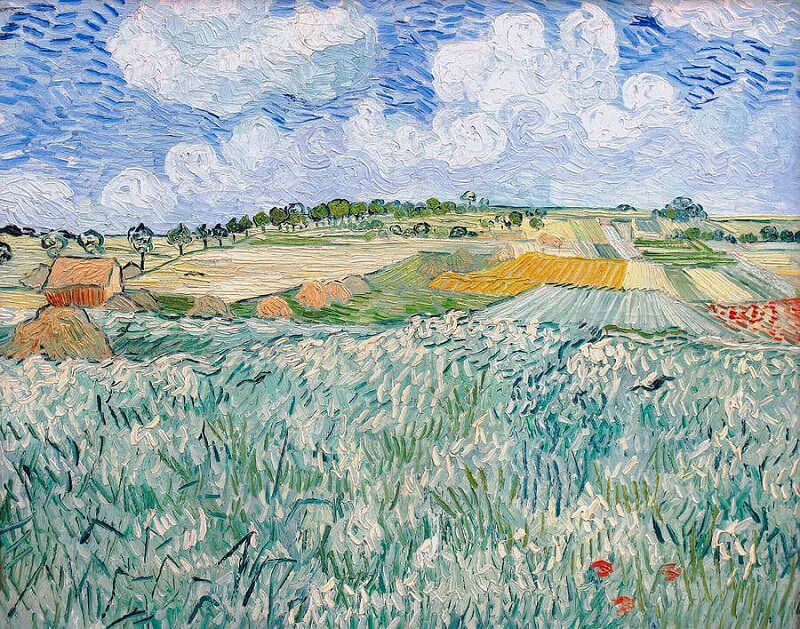Landscape near Auvers: Wheatfields , 1888 - by Vincent van Gogh

In the last weeks of July Van Gogh was working on pictures of familiar motifs, thatched cottages and wheatfields. In these late pictorial essays the problems of colour, space and texture, which had been so troublesome and unsatisfactory when he had first taken up such subjects, have been resolved. The considerable differences between this landscape and Wheat Fields near Auvers should not disguise an underlying relation. The significance Van Gogh attached to representations of agricultural scenes had changed little. In the inhabited and worked landscape of rural Brabant or France Van Gogh wanted to see signs of a way of life, a social order that was in his terms healthy, serene, more natural, timeless and organic, that was different from the world he inhabited, conflict-ridden, divided, and changing rapidly under the impetus of new economic and social forces. The motif from which this painting was made is the plain outside Auvers. It could as easily be Provence or Brabant; there is nothing specific about it. It tells us nothing particular about Auvers or its population and their ways of life or work. But by the organization of its colour, the combination of perspectives in the close foreground and the receding middle and far distance, the painting invites the spectator to contemplate fields, clouds, trees and haystacks, held pleasantly and harmoniously together, potentially extending beyond the limits of the frame to surround him or her.
The painting now is located in The Van Gogh Museum




















